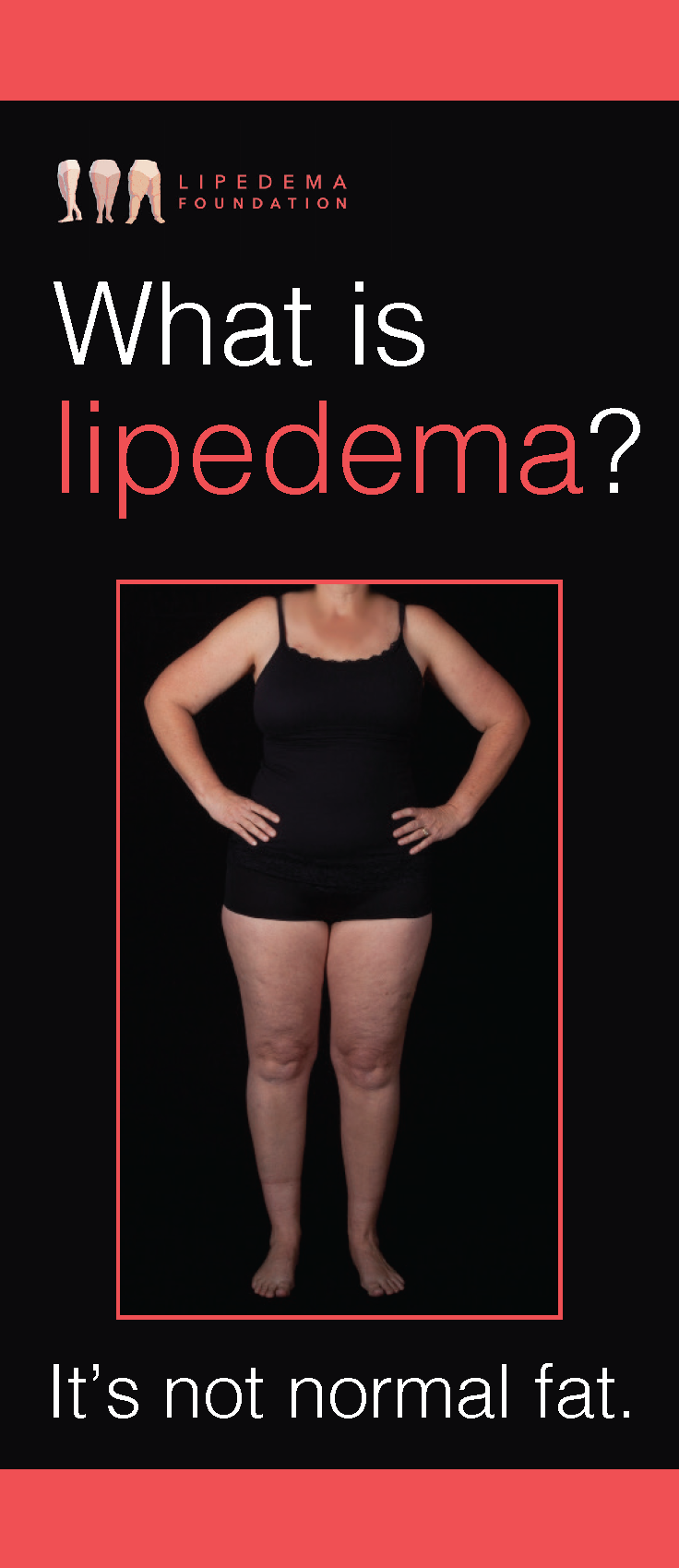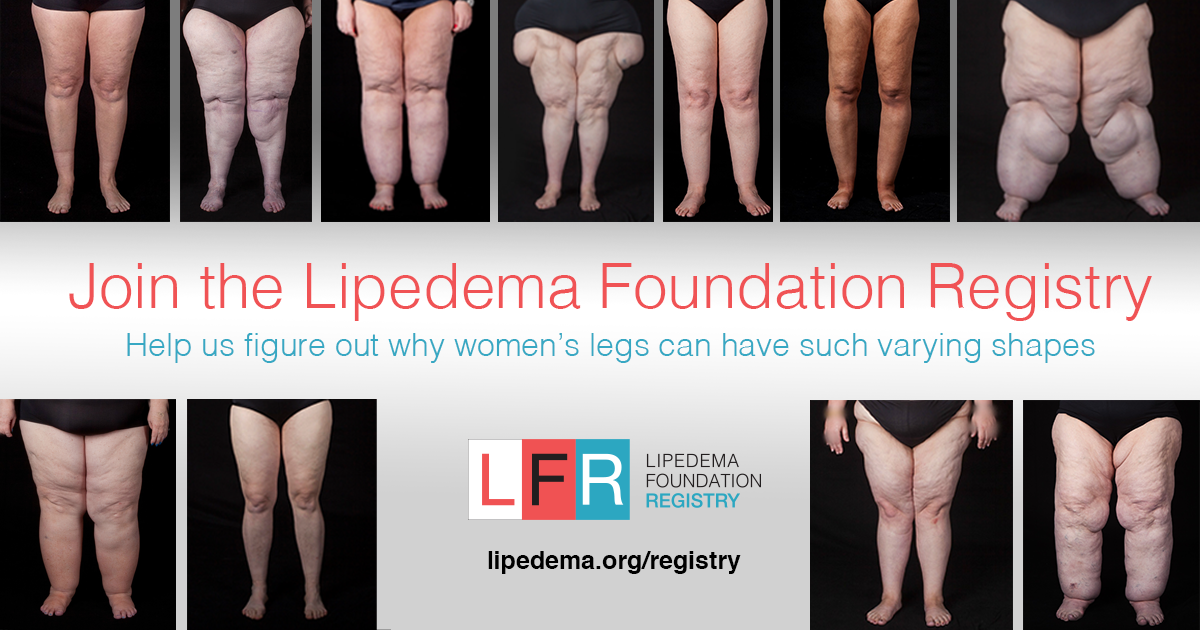For Healthcare Professionals:
ICD codes R60.9, E88.2, E65
$12.5 Million USD
58 Research Studies
40+ Institutions, 10+ countries
239,175+ Brochures
1 Registry
What is Lipedema?
Lipedema is a chronic medical condition characterized by a symmetric buildup of adipose tissue (fat) in the legs and arms. A common but under recognized disorder, Lipedema may cause pain, swelling, and easy bruising. It may be accompanied by an unusual texture within the fat that can feel like rice, peas, or walnuts beneath the surface of the skin. The intensity of pain may range from none to severe, and its frequency may be constant, come and go, or only occur when the fat is pushed on. Limited public awareness of Lipedema, coupled with few research-backed treatments, can lead to exacerbation of symptoms as well as physical and emotional distress. Common symptoms include fatigue, muscle pain, or easy bruising.
Who Gets Lipedema?
Lipedema occurs almost exclusively in females, with rare reports of development in men. Although believed to be prevalent, the exact incidence is not known.
What Causes Lipedema?
The causes of Lipedema are not well understood. It is reported to start or worsen during puberty and other periods of hormonal changes, such as pregnancy and menopause. Research is underway to determine the biological role of hormones, genetics, inflammation, and metabolism in the condition’s development.
Is It Obesity?
No. Obese fat occurs throughout the body. In Lipedema, the fat occurs in the limbs, sparing the hands and feet. People with early-stage Lipedema typically do not have diabetes, high cholesterol, or high blood pressure.
Is it Lymphedema?
No. The swelling in lymphedema often affects only one side of the body, and includes the hands and feet. Furthermore, lymphedema can be diagnosed with imaging or genetic tests.
Helpful Resources
The Lipedema Foundation maintains a resources page – lipedema.org/resources – where you will find everything from self-care videos to ICD Codes.
Lipedema is not rare, but a proper diagnosis is rarely made
Diagnosis Challenges
Despite initial medical reports from more than 75 years ago, there are no definitive diagnostic tests for Lipedema. It is often misdiagnosed as obesity, lymphedema, Dercum’s disease, or chronic venous insufficiency. Underlying Lipedema may also be present in patients with these conditions. Currently, the only way to diagnose Lipedema is to have a trained physician perform a physical examination with a review of the patient’s medical history (see our Clinician’s Guide to Lipedema for more details). However, few physicians are comfortable diagnosing and treating Lipedema because of the lack of diagnostic tests and research-backed treatments. Rehabilitative therapy professionals may be confident in distinguishing Lipedema from lymphedema. Surgeons who perform liposuction are able to remove fat but may not provide broad or long-term care.
Learn more about Lipedema diagnosis.
Locate rehabilitative therapy professionals in your area.
Quality of Life
Alongside the physical pain symptoms, Lipedema can impact an individual’s mental health and quality of life, leading to lack of energy, feelings of hopelessness, low self-esteem, or eating disorders. Affected individuals are encouraged to speak with their healthcare provider about their mental health. Support groups where patients can share their experiences may also be found through social media. To find these groups, go to Facebook and search Lipedema or lipoedema.
What to Do About Lipedema
Dealing with Lipedema can be a lonely and confusing journey.
Some of the primary goals of Lipedema treatment are to:
Manage Inflammation
Improve Lymphatic Flow
Reduce Fibrosis
Manage Pain
Decrease Adipose Tissue
Promote Overall Health
Prioritize Emotional/Mental Health
While there is currently no cure for Lipedema, there are various care and Lipedema treatment options available that can effectively manage symptoms and improve the quality of life for patients. While surgery such as liposuction can be valuable for some people to manage pain and improve mobility, the decision to undergo surgery must not be taken lightly and should be made in partnership with a qualified medical professional.



